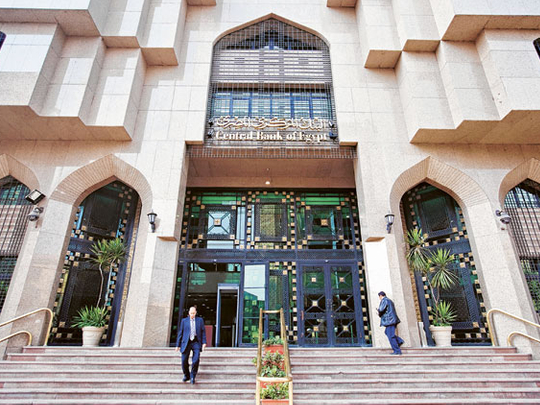
Dubai: Egyptian banks' net interest margins (NIMs) are likely to come under pressure in 2021-2022 according to rating agency Fitch Ratings.
The degree of margin compression will be driven by the extent of potential policy rate cuts and changes in yields on sovereign debt, as well as any shifts in banks' balance-sheet structures.
The sector-average NIM was 4.1 per cent in 2020 and has been resilient despite the Central Bank of Egypt (CBE) cutting policy rates by a cumulative 400bp to 8.75 per cent.
High yielding sovereign debt
NIMs were supported by yields on 90-day treasury bills, which were kept high in 2020 at about 13 per cent to attract back foreign portfolio investors after global market volatility triggered $17 billion of capital outflows in March-April 2020.
“If the CBE cuts policy rates by an additional 50bp-150bp and yields on sovereign securities remain, we would expect the sector-average NIM to be resilient. This is because interest income is highly dependent on sovereign yields, which represent about 65 per cent of the sector's total interest income. Nevertheless, the impact would vary depending on each bank's asset pricing power, funding structure and ability to reprice liabilities downwards,” said Zeinab Abdalla, Director, Financial Institutions - Banks
In contrast, if both policy rates and yields on sovereign securities fall by 50bp-150bp , the pressure on NIMs would be more significant. If yields on treasury bills fell by up to 150bp, Fitch expects NIM compression of up to 70bp.
Inflation-adjusted returns on Egyptian sovereign debt are among the highest in emerging market economies. While there may be room for a reduction in yields if inflation remains broadly stable, Fitch expects the CBE will seek to maintain positive real interest rates to retain portfolio inflows.
Exposure to government debt
Egyptian banks place their excess liquidity in sovereign securities, which represent about 40 per cent of sector assets, due to their high yields and the limited availability of good credit risk counterparties.
“We expect high single-digit loan growth in 2021, supported by lower interest rates and several CBE measures to boost lending,” said Abdalla.
Such measures include the CBE extending its EGP100 billion, 5 per cent to 8 per cent subsidised rates lending programme to more sectors and asking banks to increase SME loans to 25 per cent of their loan portfolios (20% previously). We forecast low double-digit loan growth in 2022 if capex financing increases with recovering GDP growth (Fitch forecasts 6% GDP growth in 2022, in line with pre-pandemic levels) and potentially higher foreign direct investment inflows.
Shift in balanche sheet structure
The shift in banks' balance sheets from sovereign debt towards higher lending could have implications for NIMs. In a scenario in which the proportion of sovereign securities in total assets falls by 5 to 15 percentage points, and policy rates and yields remain the same, Fitch sees the sector NIM contracting by up to 90bp. A shift in banks' balance-sheet structures combined with lower yields and policy rates (green line) would have a significantly larger impact, with NIM contracting by up to 170bp.
Fitch expects the deployment of liquidity in treasury bills to remain high given banks' high liquidity in local currency (the local-currency loans/deposits ratio was 45% at end-2020) and the capital benefit of the zero risk-weighting on sovereign debt.
Egyptian banks have higher profitability ratios than regional peers, which gives them more room to maintain adequate profitability margins and internal capital generation if interest rates are cut. The sector-average return on equity for Egyptian was 23 per cent in 2020 compared 10 to 17 per cent of GCC banks.








